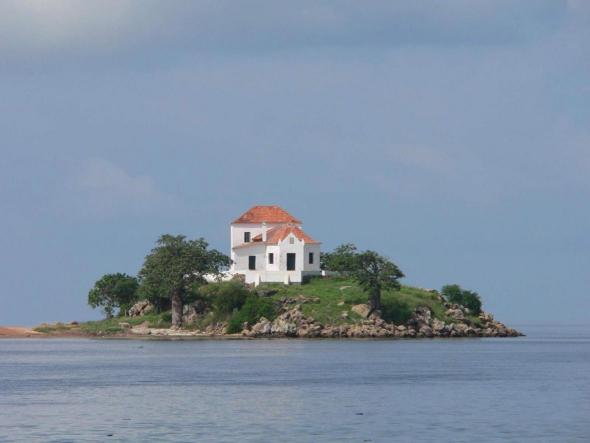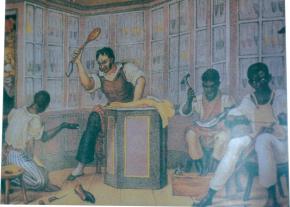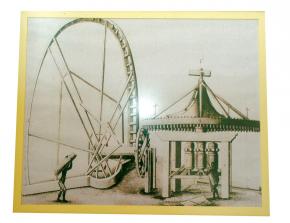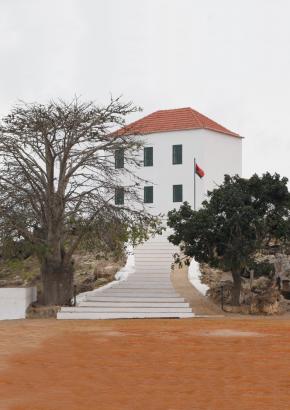Memories of the Angolan slave trade
The transatlantic slave trade in Angola during the colonial era was one of the longest in living memory. The number of Africans taken to the American continent by force from the 16th century onwards was extremely high, though the exact number will never be known.
For more than three hundred years during the colonial era, Angola was part of this horrendous trade. The consequences cannot be underestimated. It was a long time span, during which the country was part of the traffic known as transatlantic.
The triangular trade relationship liking Africa and Europe is well known. The “dark continent” supplied the slave labour that America needed, and indeed contributed to its growth, expansion and development. Slave labour also fed into European commercial interests, also generating economic, social, technological, cultural and other development. It is an issue which had repercussions in the relationship between the three continents and its consequences are still the subject of debate, as demographic studies illustrate.
There are only a few sources to draw on if we want to get close to the real number of men and women lost to Africa during the period of this trade, also known as the triangular trade. Studies, however point to a top figure of 100 million and a bottom figure of 13 million.
 Museu da Escravatura
Museu da Escravatura
Academics who study the topic, however, put forward opposing theories for the deep and complex problems that the trade must have created.
The long, unbroken period when the movement took place is unparalleled in history in the opinion of most specialist academics. It almost certainly played a part in the causes of underdevelopment in Africa (Rodney, 1972; Inikori, 1999), while the benefit for Europe were the development of unfettered capitalism and one of the factors underlying the industrial revolution (Williams, 1944).
For other authors, according to M’Bokolo, the passage of black slaves to America was no more than “migration” like many others and without any great impact on the continent’s development (1995:15).
Other opinion focus on the ways the trade was offset. According to these theories, the demographic losses were mitigated by the agricultural product from America that became part of the staple diet of Africans (mandioc, maize and sweet potatoes among others). The areas where these were introduced were, however, limited, and cultivation only spread to other parts at a much later date.
Studies of the slave trade were initially focused on economic matters, but then they began to pick up on other issues. The major dimension of the presence of Africans in the world has been shown in studies connected to cultural affairs or questions of national identity (ethnic or regional, for instance).
The presence of slaves in the societies where they were forcibly taken and their role in these places helped to create new cultures and new identities, above all in the “new world”. This came about through a mix of wisdom, knowledge, feelings and ways of being. More recently, it has been recognized that the slave trade had a part to play over and beyond the economic – advantageous fro America and Europe, disastrous for Africa – and among these issues are the cultural matters.
The traffic is still engraved in the collective memory, and keeping it in the limelight has the support of UNESCO and a number of specific countries.
One the one hand, it should always be remembered, lest it happen again in the future: studying and learning about it are therefore essential. On the other hand, the historical fact of the trade should also be highlighted so as to illustrate the contribution that Africa made to the world, in the emergence and formation of new identities and cultures and its role in the framework of globalization. Here Africa has been forgotten, as if it is merely drawn in the slipstream of a development that took place and is taking place outside Africa, or leaving Africa on the margins, rather than seeing Africa as part of it.
Angola is clearly in the frame in terms of the situations described above in reference to the continent as a whole. But it was also one of the countries most affected by the scourge, where the transatlantic trade was of such a time-space dimension that it must never be forgotten.
Starting from the vast coastline, in practically every area of this territory, the local societies were subject, directly or indirectly, to the hammer blows of this trade.
Angola has joined the UNESCO project on “The Slave routes” since this is a recognition of its history and the part it played in the formation of other “worlds” and in the building of the world as we know it.
In this project, the aspects where Angola has been most deeply involved are related to surveying and preserving these sites in the memory.
There have been many difficulties in this work, both in financial and human terms, but a range of activities has been undertaken and they can be found in the report, where there is a summary and an extension, albeit small, of the issues relating to definition of some of the places to be remembered and the sitting of others (Aleida, 2001).
 Acervo do Museu da Escravatura
Acervo do Museu da Escravatura
In terms of time, the transatlantic trade from Angolan shores lasted as long as the trade itself. The country supplied “its children” throughout the period, both when it was acceptable and when it became “an illicit trade”.
Some of the reasons for this had to do with the country itself but some were extraneous; some involved the Europeans, others the Africans themselves. However, the incentives for the trade and its impositions would seem to have come from Europe (Birmingham, 2004).
The transport of slaves from Angola to America stared in the 16th century and only finished at the end of the 19th century.
When this was a “legal trade”, threw re disputes between the European powers involved, first between Portugal and Spain and then Holland and Britain, while France fundamentally claimed the Cabinda region in the north of Angola as its own.
The actions of these countries had repercussions in the African societies, where the local leaders took advantage of the disputes for their own interests and in their own fundamentally economic and political struggles.
Kingdoms such as Ndongo, Matamba and Kassanje took part in the trade between the 16th and 18th centuries. Some, such as Matamba, grew strong while others, like the Kassanje, disappeared. Some, among them Ndongo, fell apart.
During the 18th century, the kingdoms that survived continued to expand and extend their sources of supply, while others joined the slave network, among them Ovimbundu, who wre involved into the 19th century.
The trade was officially abolished in 1836, and for this reason the continuing traffic is known as the “illegal trade” though in fact it grew in intensity. For some historians, this can be seen, on the one hand, as a reaction by the traffickers and intermediaries who refused to comply with the law because of the loss of revenue and on the other hand as an outside imposition (Alexandre, 1979).
The trade with Brazil continued into the 1850’s, with America until the Civil War (1861 – 1863) and with Cuba until around 1880.
There are still traces of the trade along the coastline around Luanda, although the Portuguese colonialists were involved throughout the country. From the coast to the hinterland, from north to south, the African societies across most of the country were affected, either directly or indirectly, by this scourge that gripped Africa for so long.
Some of the Angolan societies were directly involved in the trade, using means of varying ferocity, among them war, to get slaves. Other societies had war inflicted on them, or other means of being captured. They can be described as “producers for the slave trade”. Others were involved as intermediaries, to a greater or lesser extent, supplying the European or the African traders, both along the seaboard and inland, ensuring that slaves were penned in, then transported, then shipped out (M’Bokolo, 2003:403).
The coastal societies were all involved in the traffic in some way: for geographical reasons, they supplied the slaves, societies inland, meanwhile, normally close to the coast, were the “producers”.
There were, however, exceptions to the rule, as with the Kisama. They lived along the coast and were captured by the Ndongo or the Portuguese settlers during the 16th and 17th centuries, on the orders of the colonial government (Ferreira, 2000:I).

The societies inland produced the slaves, among them the kingdom of the Matamba. These were the spoils of war for the Lunda, who expanded in the 18th century (Birmingham, 2004:149), extending the “catchment areas” beyond the borders of what is now Angola.
The story of the slave trade is one of the bonds and fetters. It is becoming ever more urgent to get to know the history of these times of departure with no return, so that reflection can be followed by decisions which mean that the future can be built without “slaves” or lords, without dependency or servility.
- Bibliography:
- Almeida, Luísa, Lugares de memória da escravatura e do tráfico negreiro, Lisboa, Comité Português do projecto UNESCO, “ A rota dos escravos”, 2001 (mimeografado).
- Birmingham, David, Alianças e conflitos. Os primórdios da ocupação estrangeira em Angola (1483 – 1790), Luanda, Arquivo Histórico de Angola, 2004 (translation of Trade and Conflict in Angola. The Mbundu and Their Neighbours Under the Influence of the Portuguese 1483 – 1790, Oxford University Press, 1966).
- Dicionário Prático Ilustrado. New Portuguese – Brazilian encyclopeadic dictionary, editor in chief Jaime de Séguie, Porto, Lello e Irmão – Editores, 1976.
- Ferreira, Aurora da Fonseca, La Kisama (en Angola) du XVI au début do XXe siécle: autonomie, occupation et résistance, Paris, EHESS, 200, vol. I-II.
- Henriques, Isabel Castro e Medina, João, A rota dos escravos. Angola e a rede do comércio, Lisboa, CEGIA, 1996.
- Inikori, J.E., “L`Afrique dans l´histoire du monde: La traite dês esclaves à partir de l ´Afrique et l`emergence d`un économique dans d`Atlantique”, Histoire Générale de l`Afrique, vol. V l `Afrique du XVIe siécle, Paris, Éditions UNESCO, 1999, pp. 103-145.
- M´Bokolo, Elikia (editor in cheif), L `Afrique entre l`Europe e l`Amerique. Le role de l`Afrique dans lar encontre de deux mondes (1492-1992), Paris, Éditions UNESCO – Mémoire dês Peuples, 1995.
- Idem, África Negra. História e Civilizações, tomo I – Até ao século XVIII, Lisboa, Editoria Vulgata, 2003.
- Rodney, Walter, How Europe Underdeveloped Africa, Bogle _ l`Ouverture, 1972.
- Vansina, J., “Les mouvements de population e l`emergence de nouvelles formes sociopolitiques en Afrique”, Histoire Génerale de l`Afrique, vol. V – l`Afrique du XVIe au XVIIIe siécle, Paris, Éditions UNESCO, 1999, pp. 69-101.
- Williams, Eric, Capitalism e esclavage, Paris, Présence Africaine, 1968 (1ª ed. 1944).
in AUSTRAL nº 67 article provided by TAAG - Linhas Aéreas de Angola